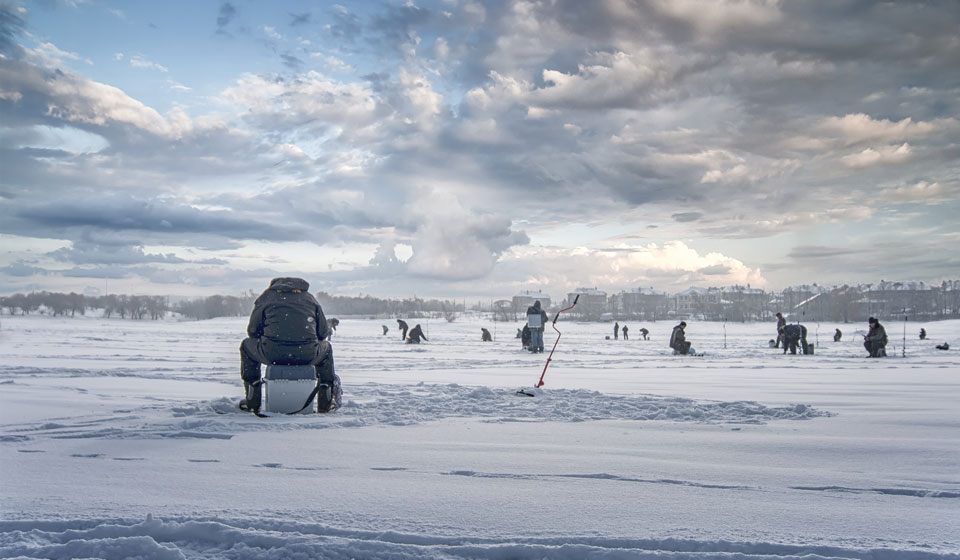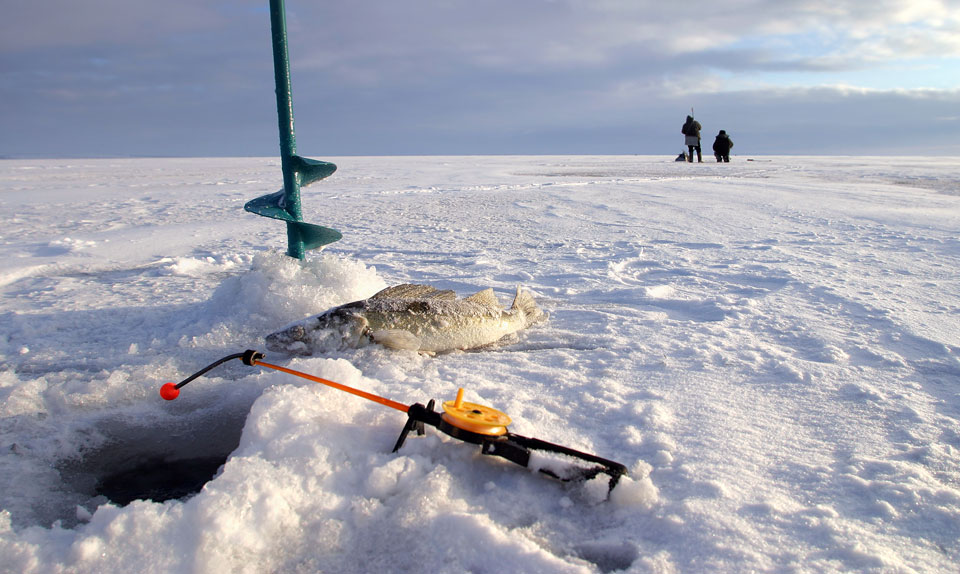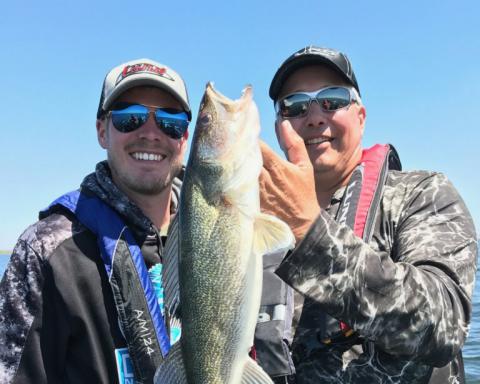
For many, fishing is the perfect sport for the warm months of the year when the heat keeps you casting on the water all day.
But if you think that summer and fall are the only times you can indulge in your favorite water activity, we (and plenty of midwesterners) beg to differ.
Though you may find it has a slower tempo than fishing in the warmer months, ice fishing is a great new challenge for anglers. It offers the solitude and serenity of any cold-weather sport with a few added obstacles to keep things interesting and, perhaps best of all, absolutely no bugs.
With the help of some simple changes to your attire and gear, you can enjoy fishing all year round. While it’s best to go ice fishing for the first time with an experienced fisherman, it always helps to have an idea of what you need and what to expect before you head out.
Fish species
As with all fishing, the species available depend on the size of the body of water and its precise location in the U.S.
Ice fishing tips are readily available online and it’s recommended you give a thorough read on everything about your chosen location and the species that can be found in the lake.
Most of the fish you catch when the water is not frozen are also available in the winter. After all, fish don’t just get up and leave the pond. This can include crappie, bluegill, perch, sunfish, pike, walleye, trout and sturgeon.
It is best to keep in mind that fish are slower in the winter. This is because the water is colder and food is scarce. For a successful catch, match your movements to those of the fish–slow and easy does it.
Safety when ice fishing
Outdoor activities are an adventure, and like all adventures, there is a certain element of risk involved.
It pays to be prepared. Always take a buddy if you decide to head out for a round of ice fishing. Two sets of hands are better than one, especially in an emergency.
Tell people at home where you are going and how long you expect to be gone. Give them an approximate time to expect you back so they know to call emergency services if they haven’t heard from you.
Always remember to bring a first-aid kit, life jacket, cell phone and ice picks in addition to your fishing gear. While it may seem like a lot, it’s always better to have it and not need it than to need it and not have it.
When you are on the ice, watch out for broken, wavy or discolored patches, as this indicates weaknesses. If you are walking out to your spot, the ice should be a minimum of four inches thick, whereas if you’re driving, you will need well over a foot.
Even after checking, keep in mind that ice safety varies from one foot to the next because of the undercurrent and that it is best to check every step before proceeding.
Ice fishing gear

The basic gear for ice fishing is pretty simple: a rod, an auger or drill, a sled, an ice skimmer, a few jigs and some ice rods. However, with more extreme weather conditions, there are a few other things you will need.
It is essential to layer up properly when on the ice and the right clothing is a critical part of your ice fishing gear. A shelter and some chairs can make your time on the ice more comfortable and help protect you from harsh weather conditions.
While your normal fishing rod will work just fine, if you plan on ice fishing regularly, you may want to invest in a proper rod. These rods are short, roughly 24 inches, allowing you to stay closer to the hole to monitor it and keep it free of ice. Ice fishing rods are also particularly sensitive, making it easier to detect when you’ve got a bite.
Clothing for ice fishing
With the cold expanse of a frozen lake stretching away in all directions, the winds can be extreme.
Layering is essential for spending longer periods of time out in the winter weather. Wearing multiple layers will easily allow you to adjust your exposure according to the elements. The layer closest to your skin should be moisture-wicking, as sweat can and will freeze while you’re out on the ice.
Merino wool garments are best for ice fishing because it is a light but extremely warm material. Merino also has a fine, silky feel and is comfortable for most skin types. Reputable companies, such as Icebreaker®, offer high-quality merino wool base and outer layers, including gloves and socks.
Synthetics also work well, but it’s best to avoid cotton where possible. This is because when cotton gets wet or damp, it stays that way and can potentially create a layer of ice next to your skin.
For insulating layers that are not sitting directly against the skin, fleece and wool are good options. Your final outer layer should be a windbreaker, though a waterproof jacket and pants work as well.
Gloves, hats that completely cover your ears, thick, moisture-wicking socks and waterproof boots finish the job. Make sure to do some research when buying to ensure the clothing you choose is up to the task.
Ice fishing shelters

While shelters are not essential on the ice, having one can make your time more pleasant, especially on extra cold or windy days. You may want to consider utilizing a shelter if you will be spending longer periods on the ice or if you are fishing with children or in extreme cold.
The styles range from simple, pop-up designs that resemble a tent to heavy, permanent shelters that have to be dragged onto the ice by a truck or snowmobile.
Ice fishing basics
Before you start to fish, brush up on your local laws and regulations regarding winter fishing and keep your fishing license with you at all times.
Once on the ice, the first order of business is making the hole you will be fishing through. Using either an ice saw, chisel or auger, drill or chisel down until you have cut through the thick layer of ice to the open water beneath.
The hole should be between eight and ten inches, large enough to pull a fish through but small enough that there is no danger of falling into the hole. Use an ice skimmer to keep the hole free and clear of ice.
Final thoughts
Ice fishing is a relatively simple sport, and much of the required gear can be repurposed from your summer fishing activities.
With a little bit of know-how, an eye to safety and proper layering, you can transform your winter months from a lull in sporting activity to a fun and rewarding ice fishing season.






























